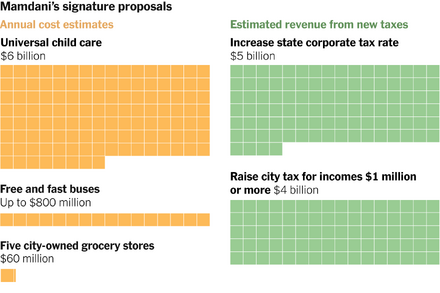
New York State Assemblymember Zohran Mamdani has unveiled a series of ambitious policy proposals for the state, ranging from expansive social housing initiatives to a comprehensive overhaul of public services. These plans, designed to address pressing issues such as affordability, inequality, and climate change, have ignited discussions not only about their potential impact but also their substantial financial implications.
Mamdani, a prominent progressive voice within the New York State Assembly, has positioned his agenda as a necessary response to decades of underinvestment and the growing cost of living in the state. His proposals touch upon several key sectors:
Housing and Tenant Rights
Central to Mamdani’s vision is a significant expansion of social housing programs, aiming to decouple housing from the speculative market. This includes proposals for state-led development of deeply affordable housing units, as well as strengthening tenant protections and expanding rent stabilization measures across the state. Advocates for these plans argue they would provide long-term stability for residents and curb displacement, while critics question the scale and logistical challenges of such an undertaking.
Healthcare and Public Services
Another cornerstone of Mamdani’s agenda involves a push for universal healthcare coverage within New York, often referred to as a “New York Health Act.” This plan would seek to eliminate private insurance premiums and co-pays, replacing them with a state-funded system. Additionally, the proposals include substantial investments in public education and expanding access to childcare, envisioning a more robust social safety net.
Climate and Infrastructure
Mamdani also champions a localized “Green New Deal” for New York, focusing on transitioning the state to renewable energy sources, investing in green infrastructure projects, and creating public sector jobs in the climate sector. These initiatives aim to mitigate climate change impacts while stimulating economic growth and addressing environmental justice concerns in historically underserved communities.
The Cost Question
The scale of these proposals inevitably raises questions regarding their projected costs and funding mechanisms. While specific figures are subject to ongoing analysis, estimates for a comprehensive social housing program, universal healthcare, and expansive climate initiatives could collectively run into tens of billions of dollars annually. For instance, projections for a statewide single-payer healthcare system alone have previously been estimated in the range of $150 billion to $200 billion per year, though these figures often account for the elimination of existing private insurance costs.
Mamdani and his supporters contend that these investments are essential and ultimately cost-saving in the long run, by reducing homelessness, improving public health, and preventing future climate-related damages. They propose funding these ambitious plans through a combination of increased taxation on high-income earners, large corporations, and a potential state-level wealth tax.
“These are not just spending plans; they are investments in the future of our state and the well-being of every New Yorker,” Mamdani stated in a recent address. “The question isn’t whether we can afford to do this, but whether we can afford *not* to. The cost of inaction on housing, healthcare, and climate change is far greater.”
Opponents and fiscal conservatives, however, express concerns about the potential burden on taxpayers, the impact on the state’s economic competitiveness, and the feasibility of implementing such sweeping changes. They argue that such significant tax increases could prompt businesses and wealthy residents to leave the state, potentially diminishing the tax base intended to fund these programs.
As discussions continue, the debate surrounding Zohran Mamdani’s ambitious plans centers not only on the merits of his proposed policies but also on the intricate financial engineering required to bring them to fruition and their potential long-term economic effects on New York State.
Source: Read the original article here.





